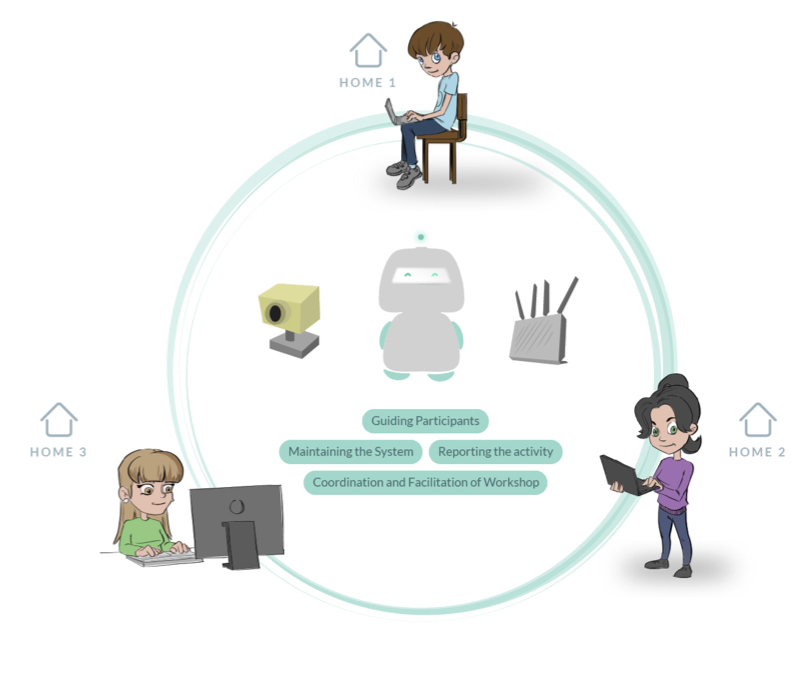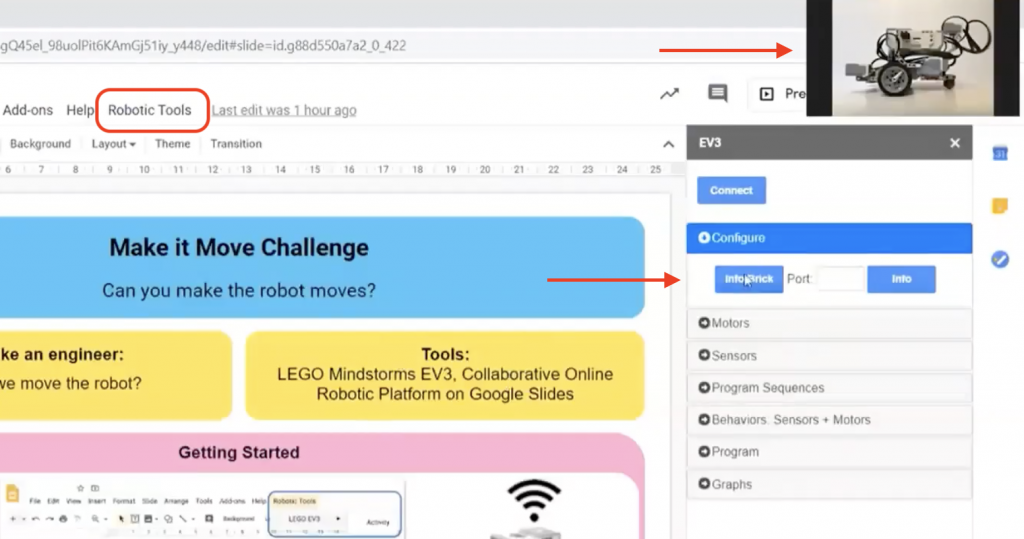CEEO Showcase: CORP (Collaborative Online Robotics Platform)

Long before the COVID-19 pandemic forced educational institutions across the globe to suddenly pivot to online instruction, the folks at the CEEO were working on a revolutionary new project to address the needs of virtual robotics instruction. While the researchers at our center could be accused of having clairvoyant knowledge of the crisis to come, their motivations were instead driven by a clear need to make robotics education more accessible.
In the field of robotics education, barriers to entry can be intimidating to educators and students due to the relatively high-cost of equipment and materials. Beyond the financial barriers that limit many schools in their ability to acquire robotics kits and parts, there are other reasons why interaction with robots can seem out of reach to many students. The researchers behind CORP, Collaborative Online Robotics Platform, recognized the need for students everywhere to be able to access and interact with robots regardless of isolating factors such as geographic location, economic status, health and mobility limitations, and resource availability at their schools. In the time since the CORP project first started, the pandemic has only heightened the recognition that virtual access to robotics is necessary for equitable robotics education.
So what is CORP? CORP is a platform that allows students to remotely login from almost any device with an internet connection and send commands to a wirelessly connected LEGO Mindstorms EV3 robot anywhere on Earth. While students watch via a camera, they can instantly see the robot execute the code it has received. Students are empowered to collaborate with other remote peers by interfacing with the robot via a live Google Slides deck. The use of the slide deck allows multiple students to not only develop and relay code directly to the robot in real time, but also to create a digital engineering journal that documents their activity and learning process instantly alongside their online work. It is a tool for simultaneously doing robotics and documenting robotics, all with the benefit of collaborative virtual access by multiple users at once.
CORP’s commitment to accessibility is baked into every aspect of the project. The decision to use Google Slides as the access point was inspired by a need to use tools that are already in common use and free for users. Teachers and students are more likely to already be familiar with how Google Slides works, so it makes the CORP system easy to adopt. The CORP add-on within Google Slides provides a structure for creating code that can toggle back and forth between Python (for students more familiar with traditional coding language) and a wholly new interface that can resemble the more natural language-based pseudocode that educators use to help students understand how commands are organized and executed.

It is a tool for simultaneously doing robotics and documenting robotics, all with the benefit of collaborative virtual access by multiple users at once.
While CORP is still under development, the research team composed of Olga Sans Copé, Jordi Albó, and Ethan Danahy are using the recent omnipresence of virtual instruction to conduct in-depth research and testing to hone this powerful tool. Here at the CEEO, we’re looking forward to seeing CORP progress and create opportunities for countless students to engage directly with robots and their online peers.



